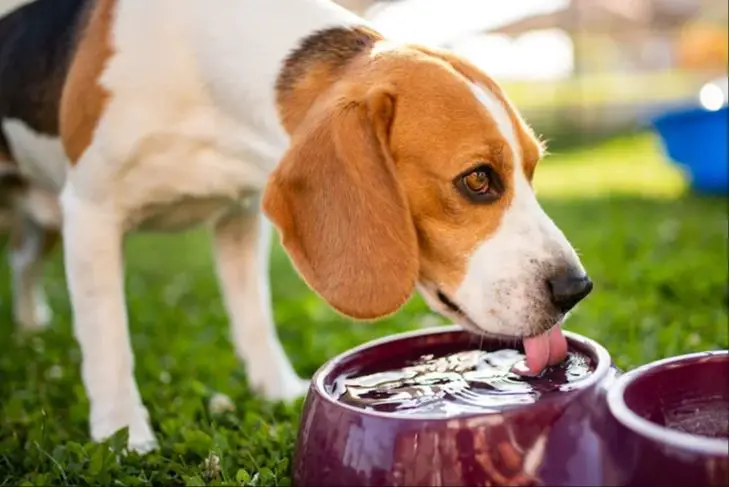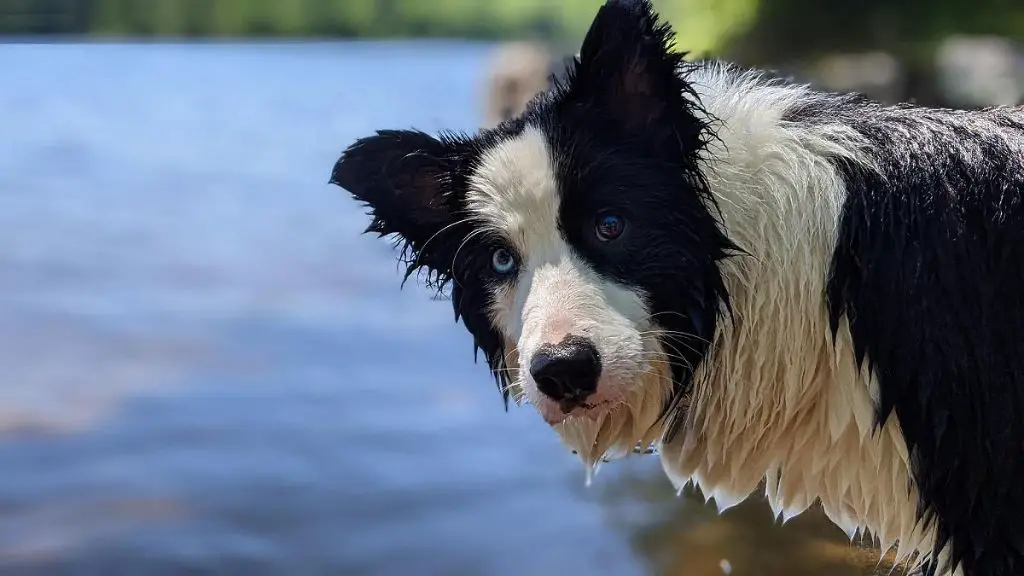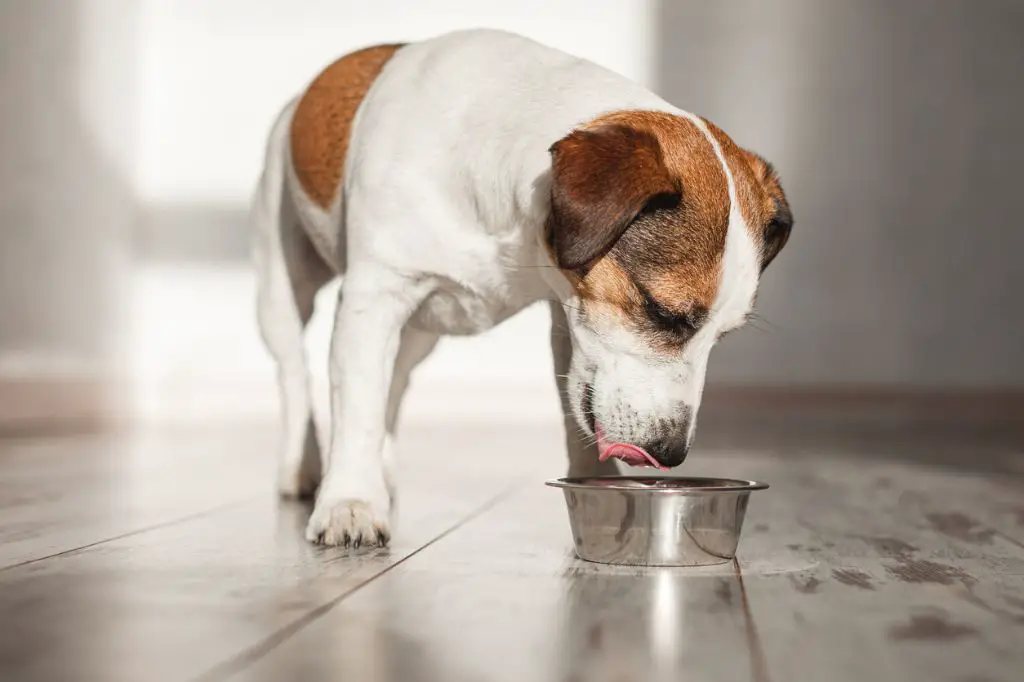Introduction
Providing adequate hydration is important for a dog’s health and wellbeing. While it may seem convenient to always keep a dog’s water bowl full, there are some important factors to consider before deciding on this approach. The amount of water a dog needs can vary based on breed, age, activity level, diet, and climate. Leaving water out at all times can lead to overhydration in some cases. This article provides an overview of the benefits and risks of keeping a dog’s water bowl perpetually full, and offers guidance to pet owners on determining the right hydration approach for their individual dog.
Benefits of Keeping the Bowl Full
Having a full water bowl provides convenience as dog owners do not have to constantly refill their dog’s water. A full bowl ensures dogs have constant access to water throughout the day without interruption.

This means less worry about the water bowl going dry while owners are busy or away from home. Dogs can drink whenever they are thirsty, which is very beneficial on hot days or during illness. It also reduces anxiety about water supply in pets and owners alike. Some additional benefits include:
- Dogs are never left thirsty waiting for food prep or owner’s schedule.
- Owners have reassurance knowing pets are fully hydrated.
- Less risk of dangerous overheating or dehydration in dogs.
Overall, keeping a bowl constantly full provides convenience and peace of mind in ensuring pets’ hydration needs are always met.
Risks of Overhydration
While keeping your dog’s water bowl full has benefits, there are some risks to be aware of with overhydration. Drinking excess amounts of water can potentially dilute the level of nutrients and electrolytes in your dog’s body (Source 1). Electrolytes such as sodium, potassium, and chloride help maintain fluid balance. When a dog drinks too much water, the electrolyte levels become diluted which can lead to a condition called hyponatremia or water intoxication.
Water intoxication is a dangerous condition that occurs when the sodium and fluid levels in the body become overly diluted. According to veterinarians, some of the signs of this condition include lethargy, vomiting, lack of coordination, glazed eyes, and dilated pupils (Source 2). If left untreated, it can lead to seizures, coma, and even death in dogs.

Excessive water intake can also lead to increased urination and frequent accidents in the house. Certain breeds with deep chests like Great Danes may be prone to developing bloat if they ingest too much water in a short time (Source 3). Bloat can cut off blood flow and twist the stomach, requiring emergency veterinary treatment.
Therefore, it’s important to monitor your dog’s water intake, especially after strenuous exercise or in hot weather. Restrict access if your dog tends to drink way more than needed. Provide plenty of fresh water but avoid allowing the levels to get too low or too high.
Breed Considerations
Certain dog breeds have specific water needs that owners should be aware of. According to the How Much Water Should a Dog Drink Water? Guide, larger breeds tend to require more water than smaller breeds, simply because their body mass is larger. Breeds prone to bloat, like Great Danes and St. Bernards, may need monitoring of water intake around mealtimes, as drinking large amounts can increase bloat risk.
High energy breeds like Border Collies and Jack Russell Terriers that get a lot of exercise may need increased water consumption to stay hydrated. On the other hand, senior dogs often drink less water as their kidney function declines with age, so it’s important to monitor their intake. Owners should take their specific breed into account when determining ideal water accessibility for their dog.

Weather and Temperature
Hot weather conditions often require dogs to consume more water than usual to avoid dehydration. High temperatures increase a dog’s need for fluids to cool its body temperature and replace what is lost through panting and sweat glands on paws (ResearchGate). During summer months or heat waves, it’s essential to provide extra water and more frequent refilling of the water bowl.
In contrast, frigid winter weather may actually decrease a dog’s motivation to drink. Cold temperatures lower a dog’s body temperature and water requirements. However, it is still important to keep fresh water available at all times, even if the dog drinks less (Frontiers in Veterinary Science). Monitoring hydration signs like gum color and skin elasticity is especially key in cold weather.
Adjusting water intake for temperature extremes can help keep a dog hydrated. While the water bowl shouldn’t necessarily be overflowing, access to water should be consistent in all seasons.
Activity Level
Active dogs have higher hydration needs compared to less active dogs. When dogs exercise, their muscles generate heat that needs to be cooled down, and drinking water facilitates bringing their body temperature back to normal ranges. According to Water: The Essential Training Nutrient, water helps cool the body’s core temperature, and even mild dehydration of 1% can make it difficult for a dog to cool down during exercise.
It’s recommended to provide water to dogs before, during, and after any exercise or activity. Allowing access to water during high intensity exercise like agility training or running can help prevent overheating. Providing ample water after exercise also helps dogs rehydrate and recover. Water supports hydration, cools the body, and replaces fluids lost through panting and sweat during physical exertion. Active dogs should always have fresh, clean water available to them.
Health Concerns
Illnesses can affect a dog’s thirst and hydration needs. According to How to Keep Your Dog Hydrated This Summer, some conditions like kidney disease, diabetes, and cancer can cause a dog to drink more water. Meanwhile, gastrointestinal issues like vomiting or diarrhea can lead to dehydration. Pet owners should monitor their dog’s water intake carefully during illnesses and adjust access to water as needed. If a dog is drinking much more or less than usual, especially for multiple days, it’s a good idea to consult a veterinarian.
The key is paying close attention to any changes in water intake when a dog is unwell. Providing unlimited access to water may not always be advisable depending on the illness. Pet owners should follow their veterinarian’s guidance on properly hydrating sick dogs.
Food and Diet
A dog’s diet can significantly impact their hydration needs. Feeding a dog wet or canned food provides extra moisture and hydration compared to dry kibble. According to Exploring the Many Approaches to Pet Hydration, “Many moisture-rich foods like Farmina N&D Chicken, Pumpkin & Pomegranate Canned Food or Weruva Paw Lickin’ Chicken in Gravy can be fed as a full meal or mixed with some kibble to increase your dog’s moisture intake.” Canned food contains around 70-80% water, whereas dry kibble only contains about 10% moisture.

The amount of salt and sodium in your dog’s diet can also impact their thirst and hydration needs. Foods that are highly processed or contain a lot of salt will make your dog thirstier and require more access to water. Opting for low-sodium dog foods can help reduce excess thirst and the need for extra hydration.
Routine and Schedule
Developing a hydration routine is important for keeping your dog hydrated. You should make water easily accessible to your dog throughout the day by placing bowls around your home and yard. Make sure to refill water bowls frequently so fresh water is always available.
Take water with you when going on walks or outings with your dog. Bring a collapsible bowl or water bottle to provide water when away from home. Offer your dog water during and after exercise or playtime. Plan short water breaks on longer walks or hikes.
Establish a schedule for monitoring your dog’s water intake and refilling bowls. Check bowls multiple times per day. Pay attention to any changes in your dog’s drinking patterns as this could indicate a health issue.
Having a consistent hydration routine will help ensure your dog stays properly hydrated. Adjust the routine as needed based on factors like weather, activity level, and health status. A bit of planning goes a long way in keeping your dog healthy and hydrated.
Conclusions
In summary, whether or not to keep a dog’s water bowl full depends on various factors including the dog’s breed, health, activity level, diet, age, and environment. While access to water is important, overhydration can also be a risk in some cases. There are benefits and risks to consider for each individual dog.
The key points are that owners should monitor their dog’s water intake, watch for signs of dehydration or overhydration, and adjust access if needed. Providing frequent potty breaks can help minimize accidents. Water intake often correlates with food intake and activity. Owners should aim for a balanced routine that works for their pet’s needs.
In the end, most dogs can keep their water bowl filled or available at all times safely and benefit from easy access to water. But special cases like puppies, senior dogs, or health conditions may require more oversight and regulation of water intake. Paying close attention to the dog’s drinking patterns, energy, toilet habits, and thirst cues is important. If in doubt, consult a veterinarian for personalized hydration advice.